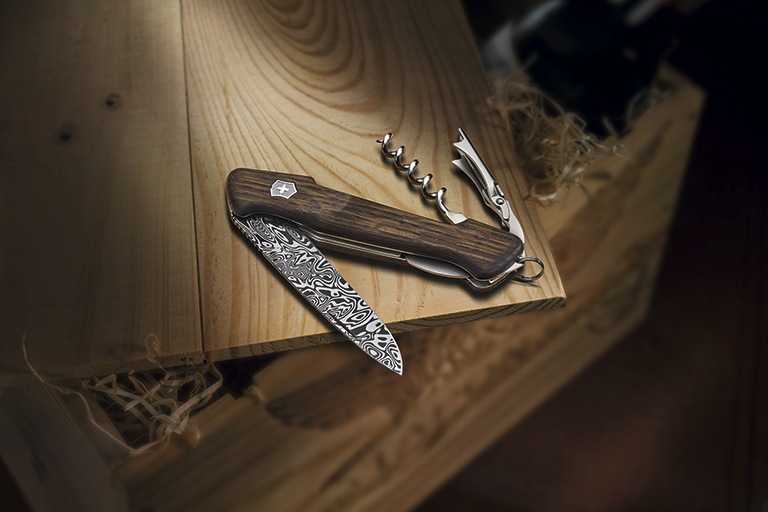Reimagined for the 21st century, this instantly-recognisable pocketknife has Victorinox steel at the heart of its enduring appeal
When Swiss knife maker Karl Elsener opened his workshop in Ibach in 1884, he could not have imagined the global success that was to follow. The multifaceted tool he created would become a Swiss icon, taken into space by Nasa’s astronauts, and even exhibited at New York’s Museum of Modern Art.
This unique tool was the Swiss Army Knife, a foldable steel utility instrument that gained renown as a precision cutting tool for Switzerland’s soldiers. The main blade, alongside other tools such as screwdrivers and can openers, is compactly stowed inside the handle and unfolds through a pivot point mechanism.
In 2017, Victorinox, now the sole supplier to the Swiss military, hit a production milestone of 500 million ‘Original Swiss Army’ knives
Elsener’s company – named Victorinox, in memory of his mother, Victoria, and after the French term for stainless steel, acier inoxydable – became the first manufacturer of the Swiss Army Knife. And the power of steel has always remained at its heart, with Victorinox’s standard steel said to be an exclusive blend from Germany and France.
Elsener delivered the first major supply of knives to the Swiss army in 1891, after founding the Association of Swiss Master Cutlers. Originally intended to help soldiers disassemble rifles, and open canned food, the knives’ increasing production was subsequently split between Victorinox and its Swiss rival, Wenger.
In 2017, Victorinox, now the sole supplier to the Swiss military, hit a production milestone of 500 million ‘Original Swiss Army’ knives. The company continues to be based in the village of Ibach, in the affectionately titled ‘Swiss Knife Valley’, now a major tourist attraction.
 Victorinox used historical crafting methods to create an exclusive range of ‘Damast’ steel Swiss Army Knives
Victorinox used historical crafting methods to create an exclusive range of ‘Damast’ steel Swiss Army Knives
A ‘special’ steel
The story of Victorinox’s Swiss Army Knife is one of constant adaptation and refinement, reflecting the evolution of manufacturing and consumer needs.
The martensitic stainless steel alloy used for the cutting blades is optimised for toughness and corrosion resistance and has a composition of 15% chromium, 0.60% silicon, 0.52% carbon, 0.50% molybdenum, and 0.45% manganese, according to Victorinox.
In 1931, Carl Elsener II, Karl Elsener’s son, set up the world’s first all-electric hardening plant, to ensure all knives were of consistent high quality. More recently, Victorinox has routinely issued limited editions of its Swiss Army knives in sought after ‘Damast’ or ‘Damascus’ steel, with its distinctive watery fine-line pattern.
Thought to be the inspiration behind Valyrian – the extremely strong fictitious steel featured in the fantasy series Game of Thrones – Damast is considered a ‘special’ steel. Though the original recipes and techniques from ancient India and Persia for making Damast steel are long since lost, a 2006 breakthrough by scientists was able to pinpoint the steel’s composition. Analysing antique Damascan sabres, they found that carbon nanotubes or threads through the blades gave the steel its unique hardness and flexibility, as well as a self-sharpening quality.
These characteristics have been captured by Victorinox’s Damast Limited Edition steel pocketknives. With repeated heating, mechanical layering and mixing of different steel types and powders, the company has been able to produce a modern day Damast. Only a few thousand of these knives have been issued since 2010, featuring steel enduring enough to reliably cut through a host of other materials.
Today the company’s product family continues to grow. There are bespoke pocketknives for every persona, from the ‘Adventurer’ and the ‘Explorer’ to the ‘Winemaster’ and ‘Picknicker’, boasting up to 42 different features, including a removable USB.
Yet, whatever the combination of tools tucked away within, it is Victorinox steel which continues to be the irrefutable core of the Swiss Army Knife’s ongoing success.
Images: iStock, Victorinox